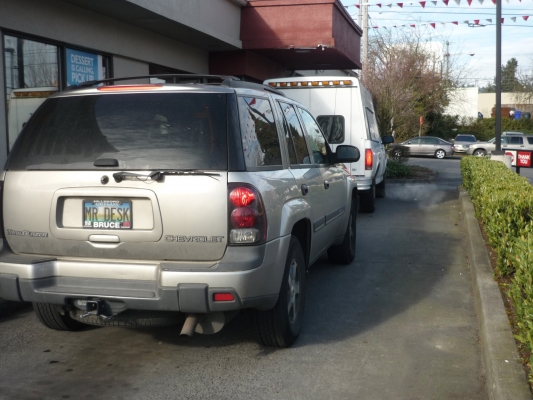Researchers evaluate ODOT's Ecodriving program

A new OTREC research project, in partnership with the Oregon Department of Transportation, will evaluate the effectiveness of a program to promote "ecodriving," or fuel-efficient driving.
The ODOT program seeks to help the state reduce greenhouse gas emissions by giving commercial drivers training in ecodriving practices.
Led by Portland State University’s Donald Truxillo and John MacArthur, the project was one of the OTREC “Small Starts” grant winners announced earlier this month. The researchers are working with ODOT program manager Stephanie Millar.
ODOT’s effort, rather than concentrating on individual drivers, focuses on entities with a fleet of vehicles at their disposal. Entities — such as the city of Portland, or private, commercial companies — who maintain a fleet of cars and/or trucks will be given materials to educate their employees on ecodriving. It is part of a larger effort on Oregon’s part to reduce harmful emissions and help stop global climate change.
“Long-term solutions include biking, transit, better cars,” says MacArthur, an OTREC researcher in sustainable transportation, “but what can we do now? There are simple ways to improve your driving behavior and vehicle maintenance.” These include things that the average driver might not be aware of, like keeping car windows closed at high speeds to eliminate drag and increase fuel efficiency, or turning off your car instead of idling when you have a long wait.
The materials that ODOT provides, in the form of videos and brochures, will also instruct in the best ways to increase fuel efficiency through vehicle maintenance. Keeping up on simple things, like maintaining optimal tire pressure and making sure the oil is regularly changed, can help a vehicle run with fewer CO2 emissions.
Truxillo is an organizational psychologist, also known as a “work” psychologist. He specializes in employee intervention programs, which is essentially what the ecodriving program is. He plans to evaluate the program by observing how employees work with the new practices.
“If you put an employee … program into place, and people aren’t motivated to do it, then it’s probably not even worth putting it into place,” he says. “What are the factors that predict whether the program is effective or not?”
Those factors include how the employees perceive their work environment, and what type of relationship they have with their supervisors. Just providing employees with educational materials is not enough. The most effective intervention programs, says Truxillo, are those in which “management demonstrates a real interest in helping employees understand.”
Truxillo and MacArthur have plans to evaluate the program from several angles, to test how much real effect it is having. One thing they intend to do is get before-and-after fuel data from several of the fleets, to measure whether (and if so, how much) less fuel is burned under the ecodriving program.
The Oregon Governor’s Advisory Group on Global Warming has set a goal for the state of Oregon: by the year 2050, according to the Oregon Strategy for Greenhouse Gas Reductions, the level of greenhouse gas emissions in the state should be 75% below what it was in 1990. In the short term, the focus is on halting the increase in emissions and making sure they do not rise above 1990 levels.
The ecodriving program is ODOT’s next move toward achieving this goal. OTREC researchers hope, by closely evaluating this effort, to eventually help reduce emissions and establish environmentally sound driving practices throughout the city of Portland.
The ODOT website provides a link to a list of simple ways to make your own driving more green: http://drivelesssavemore.com/pages/eco-driving-tips-save-money-reduce-your-environmental-impact
